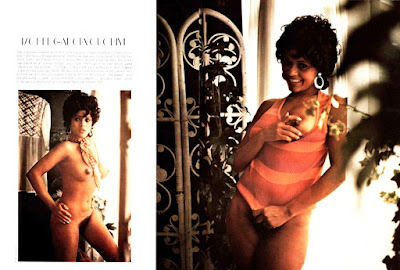Book Review: 'Into Deepest Space' by Fred Hoyle and Geoffrey Hoyle
Fifty (!) years ago, in the summer of 1974, I joined the Science Fiction Book Club. My selections included 'Again, Dangerous Visions', and 'The Ice People', by Rene Barjavel. Another of the books I wound up getting was 'Into Deepest Space', by Fred and Geoffrey Hoyle.
How well does the novel come across when re-read five decades later ?
Well......
'Into Deepest Space' was published by Harper / SFBC in hardcover in September, 1974. A mass-market paperback edition was released in November, 1975 by Signet, with the cover artist uncredited.
'Deepest' is a sequel to the 1969 novel 'Rockets in Ursa Major', but it's not really mandatory to have read 'Rockets' in order to understand the background of 'Deepest.'
As 'Deepest' opens, lead character Dick Warboys, and his alien friends from Ursa Major, Alcyone, Betelgeuse, and Rigel, are enjoying their victory over the malevolent Yela (who, as detailed in 'Rockets', were prevented from destroying the Earth by a stratagem administered by Warboys). However, the Ursa Major crew's celebration quickly is ended by the discovery that a massive cloud of hydrogen is entering the solar system. It appears the cloud is the result of an action by the Yela; should the cloud impinge upon the atmosphere of Earth, it will trigger a catastrophic explosion that will end all life on the planet.
So it's back to dealing with the Yela, and Warboys and his friends board the Ursa Major vessel, and join up with a hastily assembled armada of Terran warships for a rendezvous near Jupiter. The fleet will then speed to a confrontation with the Yela. It seems at this point in the narrative that 'Deepest' is going to unfold as a traditional 'spacewar' novel.
However, barely a quarter into the novel, the plot undergoes a considerable shift, focusing on the travails of the ship carrying Warboys and friends consequent to an encounter with a Yela vessel. There is much exposition on the mechanics of space travel, with drama generated from the need for the Ursa Major crew to come up with solutions to various engineering dilemmas, such as the loss of power, malfunctioning navigational arrays, broken intercoms, uncooperative airlocks and hatches, and ship-to-ship combat with the Yela.
Inevitably with this type of sidereal, 'hard' science fiction narrative, things get rather boring, for the realism permeating the book doesn't bring with it much excitement.
Where 'Deepest' redeems itself is in the closing chapters. I won't disclose spoilers, save to say that the Ursa Major ship does indeed travel into Deepest Space......and beyond. The book's ending brings with it a 'cosmic' revelation that strains credulity quite a bit, but at the same time, is in keeping with the Hoyle's intent of giving the novel an educative quality.
The verdict ? 'Into Deepest Space' deserves commendation for being an unashamedly hard sci-fi novel during the apogee of the New Wave movement, and for its efforts to present concepts of astrophysics and space travel to intellectually inclined laymen. Thus, I am assigning it a rating of Three Stars.
















.jpg)

.jpg)























































